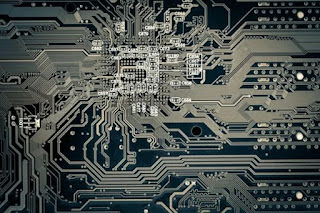How does WiFi technology work? Advantages and disadvantages of its use.
Internet communication LAN network router icon
WiFi (Wireless Fidelity) is a wireless network protocol that
devices use to communicate without a direct cable connection. This technology
represents a type of wireless local area network (WLAN) protocol based on the
IEEE 802.11 standards. Wlan
Networks allow computers to connect through wireless radio
connections by sharing data and accessing external networks. You can connect
multiple enabled devices that are within range of the WLAN. Simply put, WiFi is
access to the Internet from a wireless-capable device.
like a phone, tablet or laptop. Most modern devices support
WiFi, allowing you to join a network and thus access the Internet and share
resources.
Wireless loyalty
How does WiFi technology work?
It's like listening to the radio, but both ways. Instead of
just receiving sound like we do with AM (amplitude modulation) or FM (frequency
modulation) wavelengths, WiFi also allows you to send data, such as an email or
social media post.
WiFi sends data over radio waves quickly and reliably so
that whatever you are trying to do, the video you want to stream or the game
you are going to play, it runs smoothly for you.
WiFi works on radio frequencies of 2.4 GHz and 5 GHz (if you
see a wireless network with the number 5 at the end). Think of these numbers as
setting your car stereo to 91.0 FM to listen to your favorite music station.
Except you don't really need to configure anything. Your WiFi router decides
which radio station to put your device on so you can watch YouTube videos on
your smartphone or make a video call while on the go.
5 GHz WiFi is more optimal for devices that need a higher
connection speed, while 2.4 GHz will be ideal for devices where the range or
coverage is greater.
There can be multiple WiFi networks on the same frequencies,
so you can see your neighbors' networks when you try to connect your device.
Your WiFi network can slow down at times. If you have
multiple Wi-Fi networks running at the same time in the same area, they all use
the same frequency ranges.
Also, some parts of your home may have a better WiFi signal.
It depends on the router. A single router is like a light bulb in the sense
that one light bulb has a limited light range and a router has a limited signal
range.
Placing the router in the correct location can help you
dramatically improve your signal range. Try to place it in the center of the
area you want to cover and try to make it an area free of obstacles to get the
maximum range.
If that is not enough, you can choose to buy a WiFi
repeater, a CPL (Power Line Communication) or a Mesh system to improve the
coverage of your network throughout the house.
Advantages and disadvantages of wireless networks.
One of the main advantages is the ease with which they allow
people to share information.
The most important advantage of using WiFi is the ability to
use the Internet connection to connect to various services. These services
include television, broadband Internet access, Bluetooth, and VoIP, among
others.
Advantage
Accessibility - Wireless technology does not require
cables so users can communicate even when they are on the go.
Flexibility - Allows users to do their work
productively even when they are away from their desks.
Cost-effective - Wireless networks are cost-effective
solutions because they are easy to install and inexpensive.
Greater opportunities: with its use, companies can
introduce new products and / or services to the market. Many train stations,
cafes, airports, and hotel waiting rooms have installed WiFi services so you
can connect your devices on the go.




Comments
Post a Comment